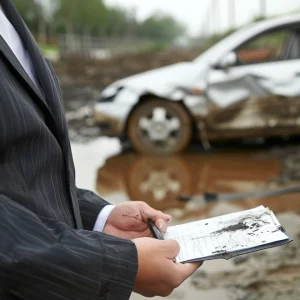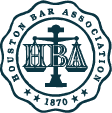The image of an 18-wheeler navigating through a blizzard conjures up a dangerous scenario that underscores truck drivers and other motorists’ challenges. Winter weather conditions, especially blizzards, significantly increase the risk of accidents on the road. When such incidents occur, the aftermath often involves complex legal proceedings, with attorneys playing a pivotal role in determining fault and securing justice for the victims.
Understanding the Risks
Operating an 18-wheeler in average weather conditions demands skill and attention, but when winter storms hit, the challenges multiply. Reduced visibility, icy roads, and unpredictable weather patterns make driving treacherous for even the most experienced truckers. The sheer size and weight of an 18-wheeler amplify the potential for catastrophic accidents, putting both the truck driver and others on the road at risk.
Factors Contributing to 18-Wheeler Accidents in Blizzards
Limited Visibility:
In blizzard conditions, visibility is severely compromised, making it difficult for truck drivers to see the road ahead and anticipate obstacles or other vehicles. This lack of visibility increases the likelihood of collisions.
Icy Roads:
Ice-covered roads are a significant hazard during winter storms. With their heavy loads, trucks require significantly more stopping distance on icy surfaces, making it challenging for drivers to respond quickly to unexpected situations.
Reduced Traction:
Snow and ice reduce the traction between the truck’s tires and the road, making it more challenging for drivers to maintain control. Slipping and sliding are common, especially during sudden maneuvers or emergency stops.
Brake Failure:
Cold temperatures can affect the performance of a truck’s braking system, leading to brake failure in extreme cases. This poses a significant risk, as stopping quickly in adverse weather conditions is crucial to preventing accidents.
Legal Ramifications and the Role of Attorneys
When an 18-wheeler accident occurs during a blizzard, the aftermath is often marked by confusion, injuries, and many legal considerations. Attorneys specializing in truck accidents play a crucial role in untangling the complex web of factors to determine liability and secure victim compensation.
Investigation and Evidence Gathering:
Attorneys immediately get to work gathering evidence to reconstruct the accident. This may involve obtaining weather reports, witness statements, surveillance footage, and analyzing the truck’s maintenance records. The goal is to build a comprehensive case highlighting the factors contributing to the accident.
Determining Liability:
Proving liability in 18-wheeler accidents during blizzards can be challenging. Attorneys must examine whether the truck driver operated within the bounds of safety regulations, if the trucking company properly maintained the vehicle, and whether other factors, such as road conditions, contributed to the accident.
Regulatory Compliance:
Attorneys delve into the trucking company’s compliance with federal and state regulations. Failure to adhere to these regulations may indicate negligence on the part of the trucking company, strengthening the case for the victims.
Negotiations and Litigation:
Armed with a solid case, attorneys negotiate with insurance companies or pursue litigation if a fair settlement cannot be reached. Litigation may involve holding multiple parties accountable, including the truck driver, trucking company, and potentially other entities responsible for road maintenance.
Determining Fault: A Complex Process
Establishing fault in 18-wheeler accidents during blizzards requires a comprehensive understanding of the incident’s circumstances. While the truck driver may bear some responsibility, other factors, such as poor road maintenance or defective equipment, can contribute to the accident.
Driver Negligence:
The truck driver’s actions leading up to the accident are closely scrutinized. Speeding, distracted driving, or failure to adapt to weather conditions can be indicators of negligence. Attorneys must establish a link between the driver’s actions and the collision.
Trucking Company Liability:
Trucking companies are responsible for ensuring their vehicles are well-maintained and that drivers adhere to safety protocols. The trucking company may share liability if inadequate maintenance or lax safety measures contributed to the accident.
Road Maintenance Issues:
Government entities responsible for road maintenance may be held accountable if poor road conditions, such as uncleared snow or ice, played a role in the accident. Proving negligence in this case involves demonstrating that authorities failed to take appropriate measures to ensure safe travel during adverse weather.
Manufacturer Defects:
If the accident resulted from a defect in the truck’s design or manufacturing, the responsibility may lie with the manufacturer. Attorneys work to identify any defects in the vehicle that may have contributed to the accident.
Preventing 18-Wheeler Accidents in Blizzards: A Shared Responsibility
While attorneys play a critical role in seeking justice for victims, preventing 18-wheeler accidents during blizzards requires a collaborative effort from various stakeholders.
Driver Training and Education:
Implementing comprehensive training programs for truck drivers on handling adverse weather conditions is crucial. Educating drivers on the risks associated with blizzards and providing strategies for safe driving can significantly reduce the likelihood of accidents.
Technological Advancements:
Integrating advanced safety technologies in 18-wheelers, such as collision avoidance systems and traction control, can enhance the vehicle’s performance in challenging weather conditions. Trucking companies should invest in these technologies to prioritize safety.
Strict Regulatory Compliance:
Regulatory bodies must enforce stringent guidelines for trucking companies to ensure compliance with safety regulations. Regular inspections and audits can identify potential issues before they contribute to accidents.
Public Awareness Campaigns:
Raising awareness among the general public about the risks associated with 18-wheeler accidents in blizzards is essential. Drivers must exercise caution, maintain a safe distance from trucks, and report any unsafe behavior witnessed on the road.
Conclusion
Navigating the legal landscape of 18-wheeler accidents in blizzards is a complex process requiring a deep understanding of the legal and technical aspects involved. Armed with their expertise, attorneys play a crucial role in seeking justice for victims and holding responsible parties accountable.
As we strive to enhance road safety, we must recognize the shared responsibility of truck drivers, trucking companies, regulatory bodies, and the public in preventing 18-wheeler accidents during blizzards. Working together can create a safer environment for everyone on the road, especially during the challenging winter months.












